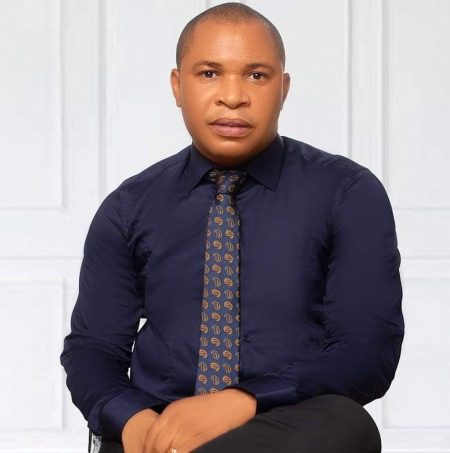
by Jennifer Porter Gore
In 2016, Mark Raymond of New Orleans was an average 27-year-old enjoying the July 4th holiday with some friends when his life changed in a split second.
After a day on a friend’s boat in a Louisiana lake, Raymond decided to take a dip and dove off the edge of the boat. His head hit the sandy lake bottom, fracturing several vertebrae. He was instantly paralyzed.
“I was lying face down in the lake,” he told Word In Black in a recent interview. “I couldn’t move, couldn’t breathe, so I did drown. But my friends pulled me out and did CPR. I later coded a few times at the hospital — and now have a hell of a story to tell.”
Raymond suddenly became one of the millions of disabled Americans confined to a wheelchair. Of them, an estimated 17% are Black, like him.
His new circumstances, however, forced Raymond to adopt a new outlook on life. As he learned to navigate his hometown from a wheelchair, he began to experience the obstacles and barriers that come with living in New Orleans, a city that has 300-year-old architecture as well as modern streets and buildings.
But there are also broken, narrow or missing sidewalks, construction barriers and potholes that became daily frustrations.
Fight for Inclusion
“I can tell you, prior to my accident, I never really paid attention to curb cuts and handicap parking spaces,” he says. After his accident, “I really approached it from a perspective of, this is a real need for somebody. Like it’s in the back of your head, but it’s not at the front of your mind.”
So he decided to do something about it.
In 2018, two years after he lost his ability to walk, Raymond founded the Split Second Foundation, a nonprofit that provides comprehensive care, resources, education and advocacy to individuals with disabilities and their families. The foundation also provides guidance to persons struggling to navigate the built environment — a huge challenge for people at the beginning of their disability journey
As a Black man living with a disability and working in the disability advocacy space, I often navigate a unique intersection of challenges that magnify the importance of inclusivity, accessibility and equity. – Mark Raymond, Founder, Split Second FoundatioN
Split Second Foundation has also opened an inclusive gym and created a guide to New Orleans for disabled tourists. Raymond also advises businesses on ways to make sure their ADA improvements consider individuals who have suffered traumatic brain injury, stroke, cerebral palsy, and neurological conditions.
Arguably SSF’s biggest project is working with New Orleans’ civic and business leaders, the NFL and others to improve the city’s accessibility in time for Super Bowl LIX in February.
The goal of Split Second Foundation, Raymond says, is to focus an accessibility lens when businesses and others upgrade infrastructure that was grandfathered in after the ADA. Often it’s a battle for inclusion.
‘Largest Minority Population’
He daily confronts what he calls the “combative relationship between preservation and function,” in a tourist city where history is a main attraction. That includes dealing with the historic St. Charles Streetcar, a well-known tourist attraction.
“Because of that historic designation, the Regional Transit Authority which oversees the streetcar line actually fought against[ accessible cars on the line,” says Raymond. Of the line’s 114 total stops, he says, “only 12 of them are accessible and those stops are, like, a mile apart.”
The lack of consideration for the mobility-challenged is ironic, considering those with disabilities are “the largest minority population on the planet,” he says. “It’s also a minority group that anyone could enter at any time in their life and there’s just a huge lack, I think, of empathy at times towards that experience.”
That’s why Raymond was eager to see the NFL to update the Superdome with accessible, wheelchair-friendly amenities.
But like many U.S. cities, New Orleans may have a long way to go for more of its disabled residents to benefit. The city’s population is just under 400,000 and 57% of the residents are Black. Roughly 10% of the population identifies as disabled and about as many lack health insurance. Just under a quarter (22.9%) of the residents live in poverty.
Racism and Ableism
The ADA is the world’s first comprehensive civil rights law for people with disabilities. These range from physical impairments such as blindness, deafness and mobility limitations to emotional and intellectual disabilities like major depressive disorder and learning disabilities.
But research and observations show that, despite the ADA’s broad protections, racial disparities exist in how the law has been implemented.
The factors driving these disparities include racism and lack of economic opportunities. It also doesn’t help that disability rights are rarely front and center in civil rights policy, and when it is, Black disabled persons aren’t considered.
These issues, combined with a bias toward ableism, mean Black Americans and other minority groups with disabilities continue to face significant challenges.
“As a Black man living with a disability and working in the disability advocacy space, I often navigate a unique intersection of challenges that magnify the importance of inclusivity, accessibility and equity,” Raymond says. “When we are honest and address the ugly truth, there is a clear recognition that health outcomes for Black people are worse categorically than other races.”
“It’s important to me to advocate for equity just as much as accessibility,” he says.
